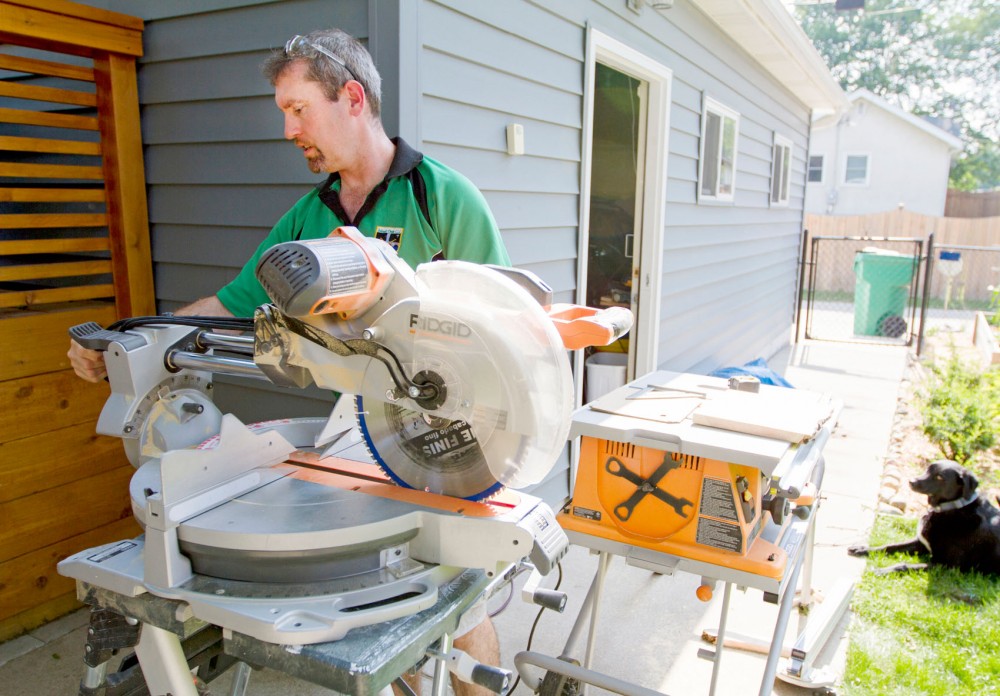Bevan Riches has been applying for three to four jobs a week since he was laid off from the Minneapolis Fire Department last September.
Now, his search may be over thanks to a $1 million grant awarded to the city to hire back Riches and five other firefighters.
Riches said for the past few months he has been checking the Federal Emergency Management Agency website weekly for news on the grant.
“I was waiting to see Minneapolis pop up on there,” he said. “It was a relief when it did.”
The $1.07 million Staffing for Adequate Fire and Emergency Response grant is part of the Minneapolis Fire Department’s efforts to bolster staffing and lower overtime costs following budget cuts in recent years. It will fund the six positions for two years.
But city officials and firefighters echoed the same concern: six isn’t enough.
The fire department currently employs 383 firefighters, down from 453 in past years.
“When it comes to public safety, it’s very expensive to staff both police and fire,” said Minneapolis fire Chief John Fruetel. “So naturally, there’s been a little bit of pressure to cost-save.”
“Nearly every city department has taken cuts in recent years,” said John Stiles, Mayor R.T. Rybak’s spokesman. He said the fire department has had to take its share, too.
Mark Lakosky, president of the Minneapolis firefighters’ union, cited concerns that the fire department isn’t maintaining adequate response time due to a smaller staff.
“There are a couple departments in the city that don’t get better when they get leaner,” Lakosky said. “When you cut fire and you cut police, people die, and they suffer greatly.”
The National Fire Protection Association recommends at least 14 personnel are on the scene within nine minutes and 20 seconds, 90 percent of the time.
In 2010, 90 percent of MFD responses met this standard. In 2011, only 79 percent did.
“What we do takes people,” Lakosky said.
Fruetel said rehiring the six firefighters will help to fill shifts of injured firefighters and cut back on overtime, but it won’t solve all the problems.
“It’s only six,” he said, but “anything will help a little.”
Layoffs
Most of the decrease in staff has been through attrition, but in September 2011, a divided City Council agreed to lay off six firefighters.
“I argued at the time it would make the city less safe and that the layoffs would cost the city more money,” Councilman Gary Schiff said. “Both have turned out to be true.”
Fruetel said there was another set of layoffs in 2003, but some “creative work” by the department let it hire them all back within a year.
Riches, 40, was among the six laid off in September. He has lost count of the number of jobs he’s applied for since then.
He said it was difficult looking for new jobs because of the possibility of being rehired one day.
In interviews, employers would ask him if he would return to the fire department given the chance.
“I’m an honest person,” he said, so he couldn’t say no. “That would be lying.”
He said two interviewers told him that he more than met the qualifications but other candidates were more guaranteed to remain on staff.
Less staff, more injuries, more overtime
Watching news about the fire at the Walker Community United Methodist Church in May was difficult, Riches said. Five firefighters were injured in the blaze that destroyed the building.
“It’s rough hearing stories like that and knowing we’ve got six able-bodied people sitting around twiddling fingers,” Riches said.
Fruetel said injuries over the past three years have been increasing in severity, requiring longer rehabilitation and recovery periods.
“Firefighter safety is absolutely number one,” Fruetel said.
“They’re like my kids, like a big family.”
In 2011, about $1.16 million accrued in injury costs. In comparison, the department incurred $422,000 in 2008, according to a city report.
“Less staff means more injuries,” Lakosky said.
With firefighters recovering from injuries, overtime costs have risen as the department works to maintain staffing levels.
“It becomes a problem that compounds,” Schiff said.
“We’ve got a number of folks injured right now, and those are my biggest issue with the overtime because I got to replace them,” Fruetel said. “That relates directly to overtime cost.”
Referencing the layoffs, Lakosky said, “These are six guys that got laid off that could have been still working and taking care of six of those shifts every work day.”
Not ‘in the bank’ yet
The Minneapolis City Council needs to approve the grant in the coming weeks, and re-hiring would then begin mid-summer.
Riches said it’s an “agonizingly slow process.”
“I can see it, but I can’t quite touch it,” he said.
Schiff said a month or two could pass before the city actually gets the money.
“Every day that we continue at our current staffing levels, we are continuing to rack up a potentially record-breaking year in overtime,” he said.
New recruits
In addition to hiring back the six firefighters, Fruetel said he’s striving to gradually hire new personnel.
“We’ve got a big attrition bubble in our system,” he said. “We could potentially lose a lot of firefighters in the next few years.”
Fruetel said he’d like to hire a small class of new firefighters each year to stay up with or a bit ahead of the attrition.
“It has to be a trickle, otherwise we’re not going to get good recruits,” Schiff said.
The department has a hiring list that is almost seven years old, Fruetel said, meaning many of the people on it are no longer in their twenties.
“We do have an aging workforce.”
Fruetel said he wants to hire 22- or 23-year-olds as a long-term investment.
“This is a physically demanding job,” he said.
Lakosky said if the number of firefighters doesn’t increase, it could be detrimental to the community.
“I know I’ve got really good firefighters,” Fruetel said. “I just hope to have a few more.”








